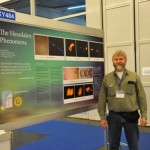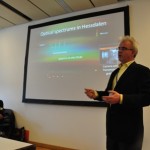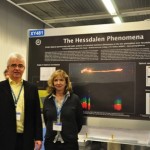A well illustrated article (Kent Wien international co-pilot) about stunning sights (natural and man-made) occasionally observed by pilots.
http://www.gadling.com/2011/03/11/cockpit-chronicles-six-surreal-sights-seen-by-pilots/
No commentsBlogSeptember 11th, 2011Philippe
A well illustrated article (Kent Wien international co-pilot) about stunning sights (natural and man-made) occasionally observed by pilots.
http://www.gadling.com/2011/03/11/cockpit-chronicles-six-surreal-sights-seen-by-pilots/
No commentsNewsSeptember 7th, 2011Philippe
Having participated to the last EGU assembly in Vienna, I would like to bring forward a short feedback and some materials (abstracts & posters PDF files) relating to the posters presented on the Hessdalen Phenomena and UAP topic.
1. The EGU
The European Geosciences Union (EGU), founded in 2002 as a merger of the European Geophysical Society (EGS) and the European Union of Geosciences (EUG), is a dynamic, innovative, and interdisciplinary learned association devoted to the promotion of the sciences of the Earth and its environment and of planetary and space sciences; and to the cooperation between scientists. Every year the EGU General Assembly brings together during a week geoscientists from all over the world into one meeting covering all disciplines of the Earth, Planetary and Space Sciences.
2. EGU 2011 Assembly
The EGU General Assembly 2011 (Vienna, 3-8 April, 2011) was an important event and a great success, featuring an impressive amount of 4,333 oral and 8,439 poster presentations, in a dozen union wide and 520 disciplinary sessions! To give an example about the wealth of the programme, under the programme group “Atmospheric Sciences” which was of particular interest to me, there was a split of four main domains (Meteorology, Boundary layer processes, Atmospheric chemistry and aerosols, Interdisciplinary sessions in Atmospheric Sciences), grouping more than 60 different sessions !
The scientific programme included Union Symposia, Interdivision Sessions, Educational and Outreach Symposia, as well as oral and poster sessions on disciplinary and interdisciplinary topics covering the full spectrum of the geosciences and the space and planetary sciences. Furthermore, Key Note and Medal Lectures, Great Debates, Short Courses, Union Masterclasses, Townhall Meetings, and Splinter Meetings completed the overall programme. At the 2011 conference, a total of 10,725 scientists from 96 countries participated (of which 28% students).
3. Sessions
I had the great pleasure to meet at this conference Bjørn Gitle Hauge and Erling Strand from the Østfold University College, and Elisabeth Blanc from the CEA (Commissariat a l’energie Atomique, F). These persons are studying the mysterious Hessdalen Phenomena (HP) and presented for the first time their research projects at the EGU. One important point is that any research on unexplained atmospheric phenomena can always be presented to scientific conferences, however if associated as a starting point to a potential defined natural phenomenon (e.g. lightning, sprites, aurora, airglows). In addition, it surfaced from some discussions that even if the Hessdalen Phenomena is relatively well known (being in the headlines since 30 years), still some scientists were not at first convinced that it a genuine phenomena existed. At least they seem to be more persuaded after having had the opportunity to talk extensively to the speakers.
Regarding the HP, it is worthwhile stressing the fact that since 2010 the French Space Agency (CNES/GEIPAN) has started a working collaboration with the Norwegian (Ostfold Univ. College) and Italian researchers (Radioastronomy Institute of Medicina) which aims at studying the unexplained atmospheric phenomena and acquiring scientific data. A first concrete action has been the installation in the Hessdalen valley of a set of experiments: an infrasound array and wideband antenna. The reason being that electric fields or infrasound could be produced by the HP, similarly to others transient luminous events (e.g.sprites). Details can be read below in the abstract and poster reproductions. The datatape containing 6 months of measurements has already been retrieved and analysis are currently being preformed by French researchers.
Session: Lighting: physics, detection and atmospheric effects
->> The Hessdalen Phenomena (Erling Strand)
 ABSTRACT: EGU2011 ES Abstract 9137
ABSTRACT: EGU2011 ES Abstract 9137
POSTER: egu2011 ES poster EGU 2011-9137
->> Optical spectroscopy and radar analysis of transient luminous phenomena in the low atmosphere over Hessdalen valley (Bjørn Gitle Hauge)
 ABSTRACT: EGU2011 BGH Abstract-13262
ABSTRACT: EGU2011 BGH Abstract-13262
POSTER: EGU poster BGH
->> Infrasound and wideband electric field measurements during Hessdalen Science camp 2010 (Elisabeth Blanc)
 ABSTRACT: EGU2011 EB Abstract 9137
ABSTRACT: EGU2011 EB Abstract 9137
POSTER: EGU poster EB
Regarding the UAP Observations Reporting Scheme, I had decided to submit two proposals. The first one for introducing the project in general terms, under the Session: “Aurora, Airglow and Transient Luminous Events in Planetary Atmospheres”. My motivation was (a) Increasing the project’s visibility within the Geoscientific community; (b) Collecting some comments, ideas about the evolution of the project in the future, (c) Eventually finding Atmospheric Scientists that would be interested in joining the project’s expert group; (d) Requesting general advice about how circulating any relevant/interesting “UAP related information” within the Geoscientific community.
The second one, in relation with the project’s educational aspects under the Session called “Science in tomorrow’s classroom”. I believe that this domain is of paramount importance, as there is a clear need of demistifying UFO events and fighting against pseudo-scientific information. In addition, the more UAP researchers can reduce the overall signal-to-noise ratio (misidentifications of natural/man-made phenomena) and focus on the more challenging observations, the better it will be. Moreover, it is also my opinion that through the UAP topic opportunities exist of stimulating the general public’s interest towards scientific fields, Technology and Observation skills.
ABSTRACTS: EGU2011 Abstract PA 9442-3
EGU2011 Abstract PA _outreach -13487-6
POSTERS: EGU poster PA_Towards
Although that I did not fulfill all the above objectives, participating to the EGU was certainly very useful. Overall, the feedback from the Geoscientists was positive, confirming therefore the relevance and validity of the project’s concept and the value of some specific features. Similarly to the Astronomers and Planetary Scientists, no special objection was raised against the nature of the project. However and ultimately, some data are needed and not only verbal testimonies or pictures.
This is the reason why it is extremely important that the serious work initiated by the Norwegian, Italian and French researchers must continue, encouraged and backed up (financially and materially). There exists an unique opportunity of acquiring scientific measurements on a new phenomena, therefore legitimising at the same time the study on Unidentified Aerospace Phenomena. I will have the opportunity in a future post to present in details further information about the Hessdalen project. Stay tuned !